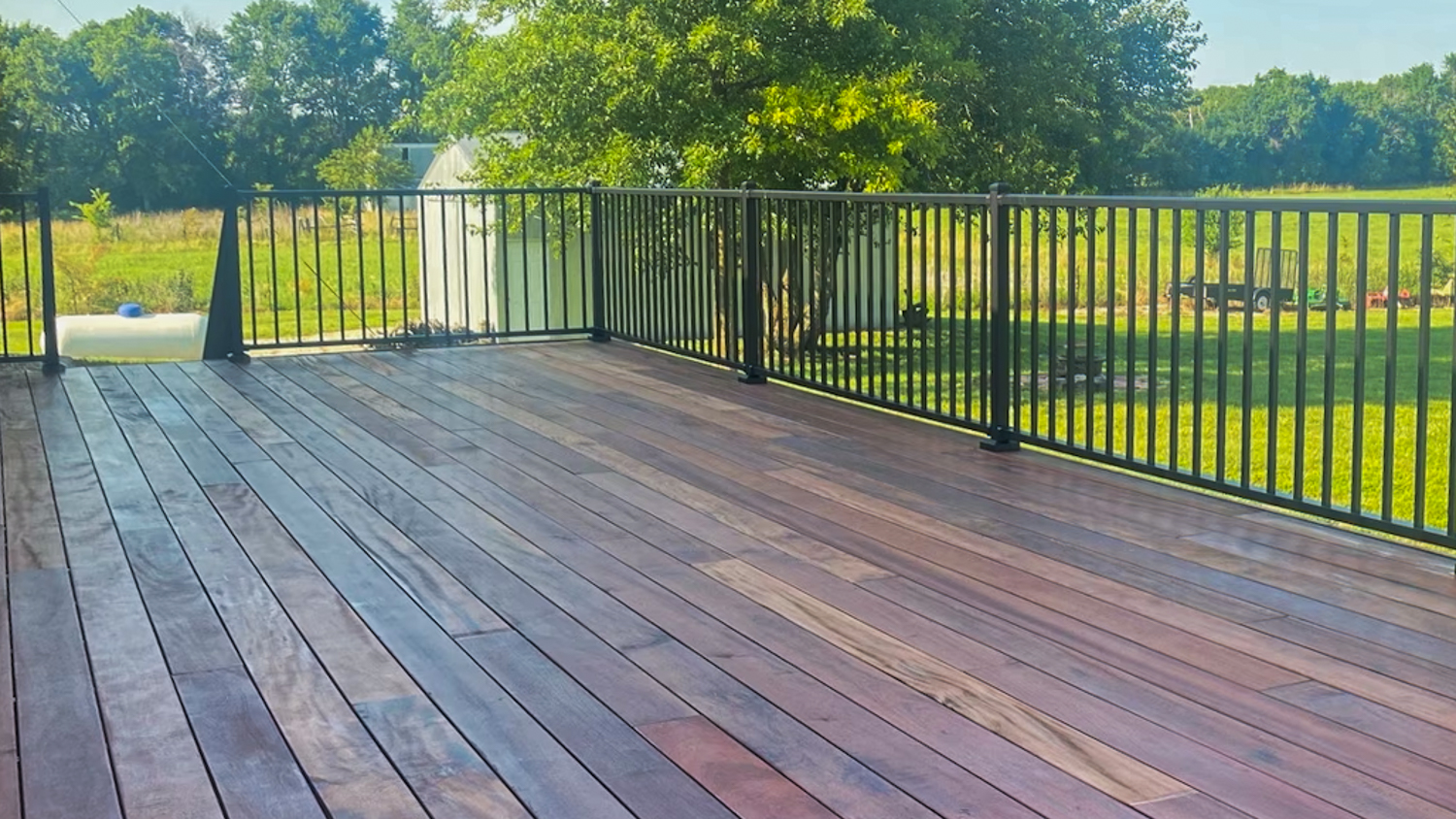
Flagstone patio costs vary by the size, material type, labor, and more. Stay tuned to see how much your flagstone patio could cost.
Deck out your pool with a fresh new surface


A pool deck may need to be resurfaced if it has stains, chips, flakes, cracks, uneven surfaces, or a worn protective coating.
You can apply a waterproof coating yourself, but a pro needs to handle more complex resurfacing projects.
Annual inspections, regular cleaning, and resealing can help the pool deck surface last longer.
A pool can transform a drab backyard into a summertime paradise where you can cool off, exercise, and entertain all season long. Building a deck around a pool makes the area even more appealing. But pool decks experience wear and tear over time and may need to be repaired. This guide explains the six biggest signs your pool deck needs to be resurfaced.
There are several signs to look out for that suggest damaged pool deck pavers. Here’s what you need to know.
Pool decks are exposed to many substances that can cause staining or discoloration, including chemicals, salt, hard water, food spills, and animal waste. Over time, your pool deck can become discolored in areas with heavy exposure to these substances, resulting in an uneven look.
Your pool deck is exposed to water daily, and that moisture can cause the surface to start chipping or flaking. Concrete and wood are susceptible to moisture damage, so this can be a concern regardless of the type of decking material you have.

Over time, concrete pool decks can develop cracks and dents caused by a heavy impact or ground movement underneath the decking. The issue can also damage your pool if the ground beneath the deck is unstable.
Pool decks need to be flat and even to allow water to drain off and away from the structure. If you notice water pooling in certain areas of the deck, it could suggest a drainage issue or a problem with the yard slope causing the deck to become uneven.
Pooling water isn’t the only sign of an uneven pool deck surface. If you notice that some areas of your deck seem uneven or sunken, chances are there’s an underlying structural issue that a pro should address.
Pool decks often have special coatings to repel heat and moisture and prevent slipping. When the coating is worn, it can cause additional damage to the deck and could even increase your risk of injury.
.jpg?impolicy=leadImage)
If you’re considering resurfacing your pool deck, one of the first questions is whether you need to hire a pro or have the time and skills to take on the project yourself. In most cases, hiring a local deck builder to inspect your pool deck helps you plan a path forward, whether that’s paying the pro to do the work or doing it yourself.
If your pool deck has structural damage or is in poor condition, leave resurfacing to the pros.
DIYing your pool deck resurfacing is possible, and there are plenty of products on the market to help you. Before you start, read the directions to ensure you apply the coating properly to avoid future issues. Remember, this project can be labor-intensive and time-consuming, so think it through before committing to resurfacing your pool deck as a DIY project.
Painting a wooden pool deck yourself is also doable, though it’s not a quick or easy task. However, you can save around 60% on the cost to paint a pool deck by tackling it as a DIY project.
The best way to prevent pool deck damage is to keep up with deck maintenance. Here’s how you can keep your pool deck in tip-top shape year-round.
Annual inspections: Thoroughly inspect your pool deck at least once a year for signs of damage. Addressing these signs early prevents them from becoming costly down the road.
Regular cleaning: Keeping your pool deck clean decreases discoloration, staining, and algae growth. Sweep up debris and clean stains with a soft brush and bleach-based solution. You can also use a pressure washer, but keep the settings low to avoid damage.
Sealant application: Sealant can help protect your deck from damage. Generally, you’ll need to reapply sealant every two to three years to keep your pool deck in good condition.
Repairing your pool deck is usually more cost-effective than replacing it. Replacing part of a pool deck may cost as little as $300, though the cost can be much higher if the deck has extensive damage.
If your pool deck has sustained serious damage, you’ll likely need to replace it. A pool deck costs between $3,000 and $12,000 to install, depending on the size, material, and your geographic location.
From average costs to expert advice, get all the answers you need to get your job done.

Flagstone patio costs vary by the size, material type, labor, and more. Stay tuned to see how much your flagstone patio could cost.

Are your porch columns old or simply unsightly? It might be time to refresh them. Here's a breakdown of the cost of replacing porch columns.

Thinking about adding a deck to your home? Explore this guide to learn about the average cost to build a deck based on factors like size, material, and labor.

Discover the average tigerwood decking installation cost, key price factors, and tips to save. Get expert guidance for your decking project.

Wondering how to build deck stairs? Follow our helpful guide to learn how to complete the final step of your outdoor decking project.

Improve your DIY skills and create new ones by learning how to build a pergola of any kind using your knowledge of a few universal steps.